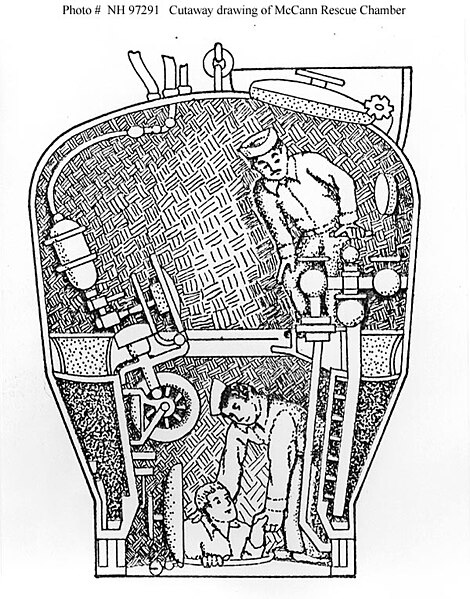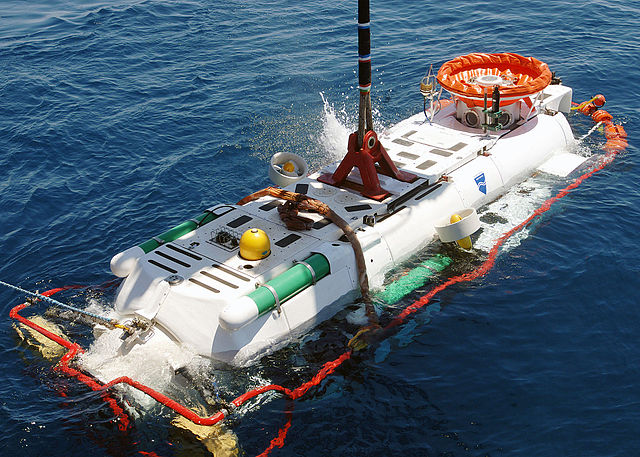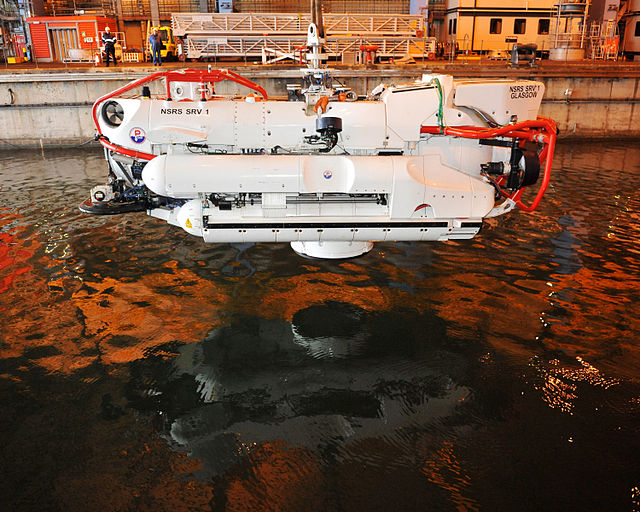Submarine rescue is the process of locating a sunk submarine with survivors on board, and bringing the survivors to safety. This may be done by recovering the vessel to the surface first, or by transferring the trapped personnel to a rescue bell or deep-submergence rescue vehicle to bring them to the surface. Submarine rescue may be done at pressures between ambient at depth, and sea level atmospheric pressure, depending on the condition of the distressed vessel and the equipment used for the rescue. Self-rescue of submarine personnel by buoyant free ascent at ambient pressure is considered submarine escape. Survivors may require recompression treatment for decompression illness.
Cutaway drawing of the McCann Rescue Chamber.
LR5 rescue vehicle is lowered into the water
NSRS in 2011.
US Navy 040426-N-7949W-007 Deep Submergence Unit (DSU) Unmanned Vehicle Detachment (UMA Det) personnel guide the Super Scorpio remote operated vehicle (ROV) to a safe recovery
A diving bell is a rigid chamber used to transport divers from the surface to depth and back in open water, usually for the purpose of performing underwater work. The most common types are the open-bottomed wet bell and the closed bell, which can maintain an internal pressure greater than the external ambient. Diving bells are usually suspended by a cable, and lifted and lowered by a winch from a surface support platform. Unlike a submersible, the diving bell is not designed to move under the control of its occupants, or to operate independently of its launch and recovery system.
Exterior view of an open (wet) diving bell
16th century Islamic painting of Alexander the Great lowered in a glass diving bell
Open diving bell on a stern mounted launch and recovery system
Wet bell exterior view







